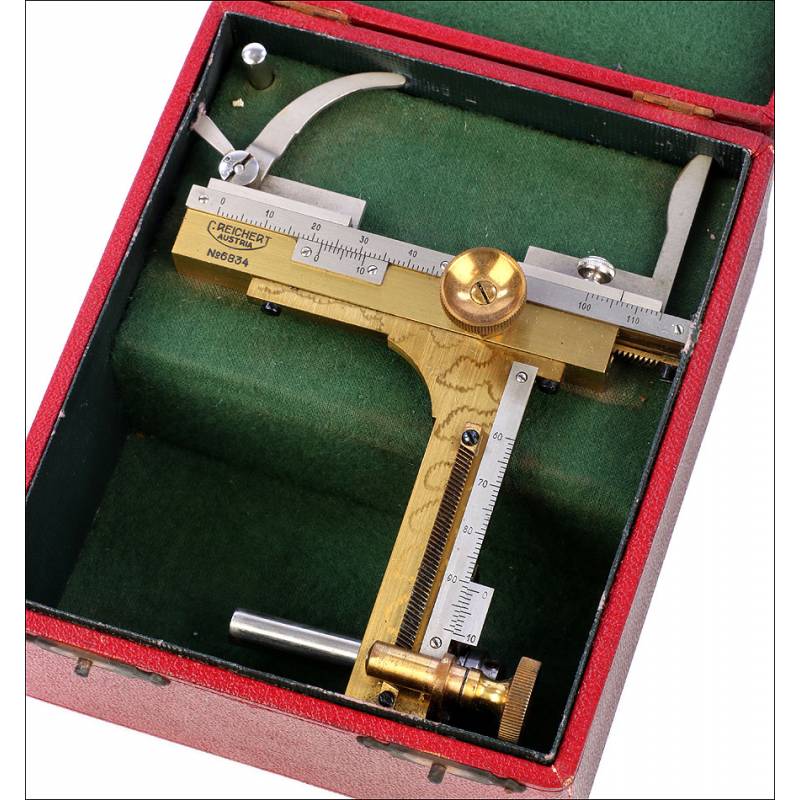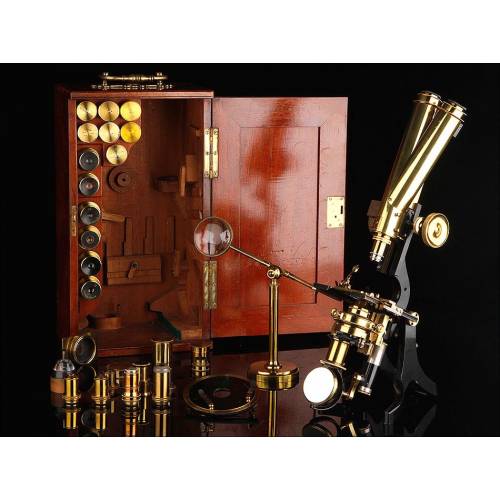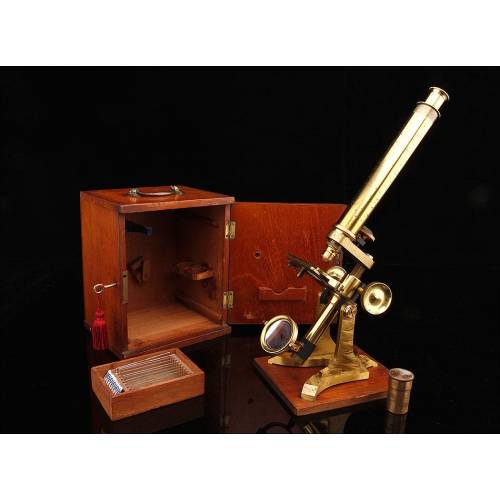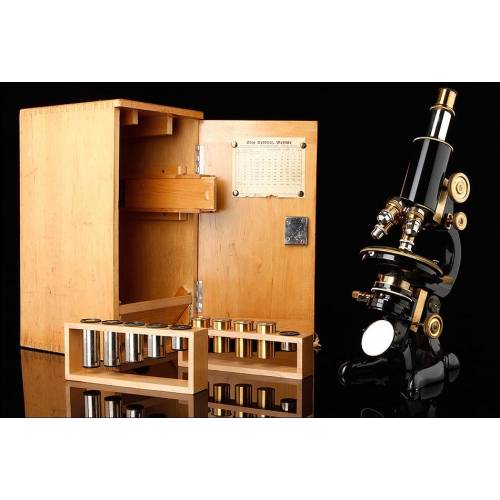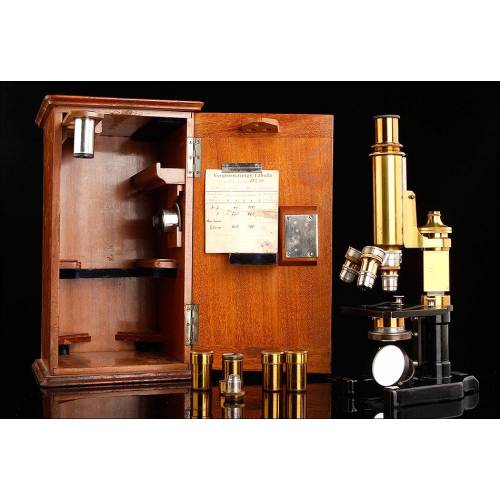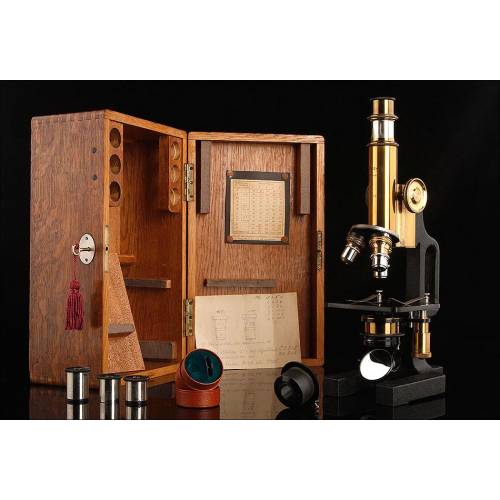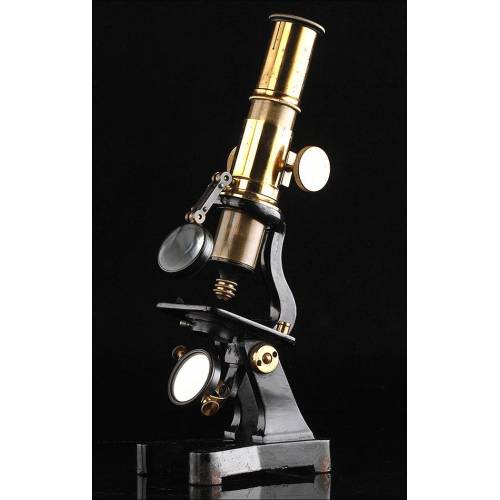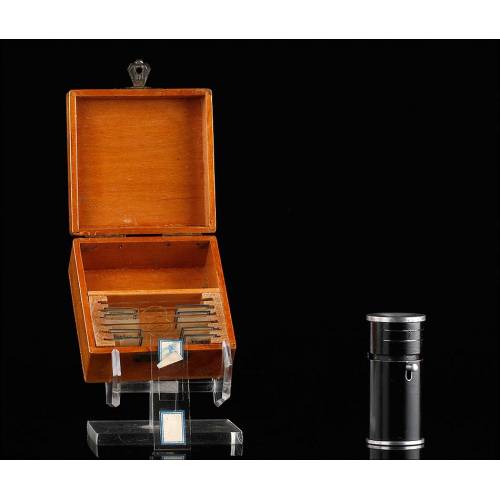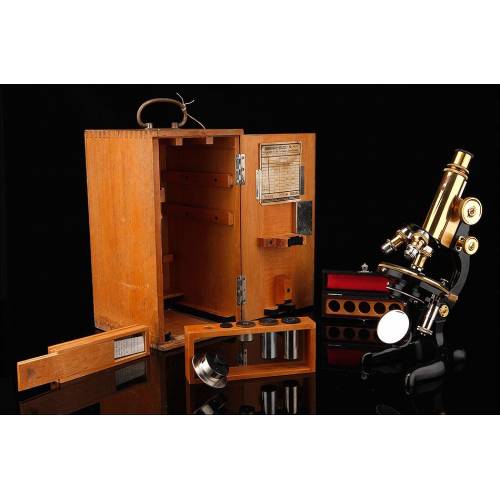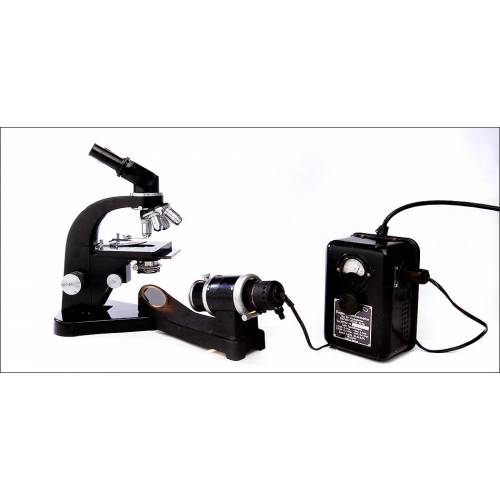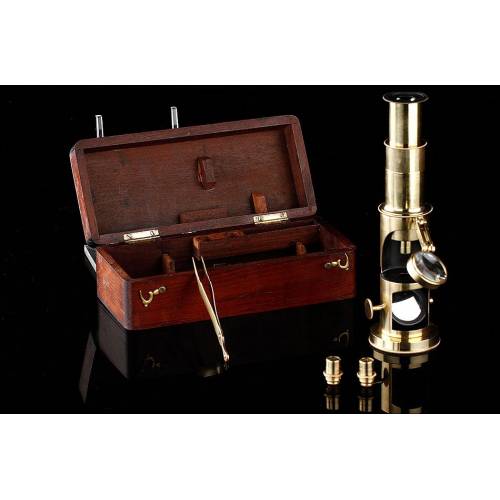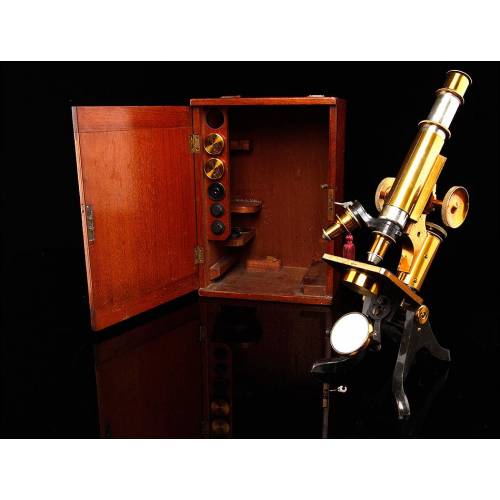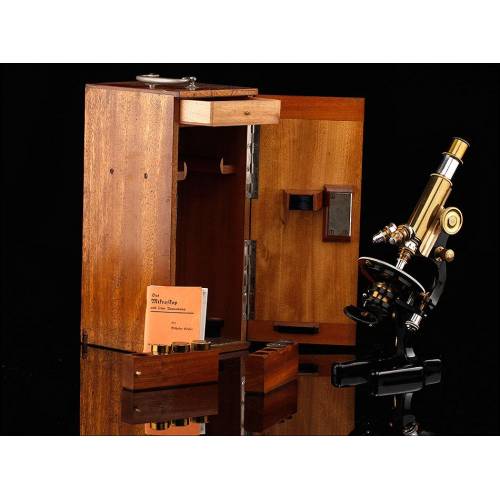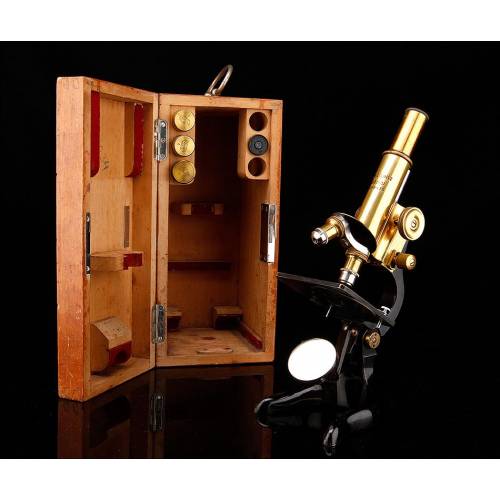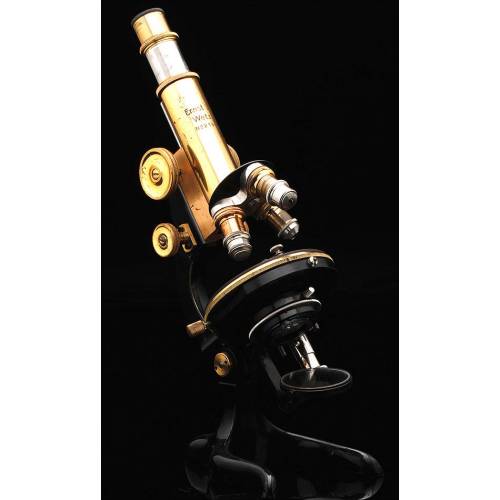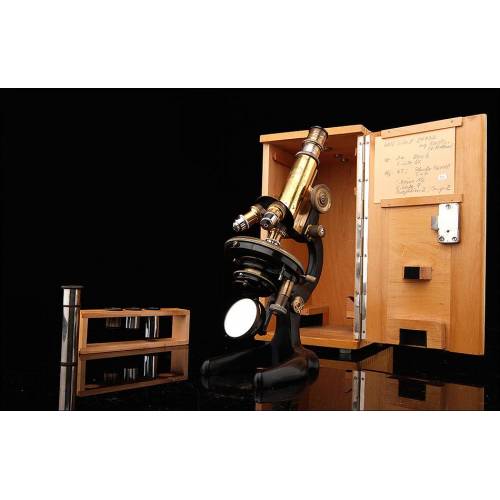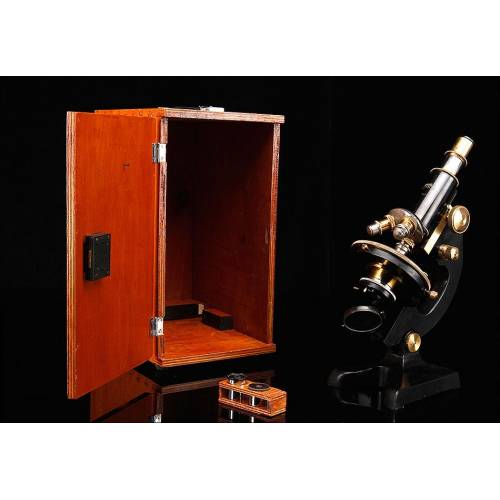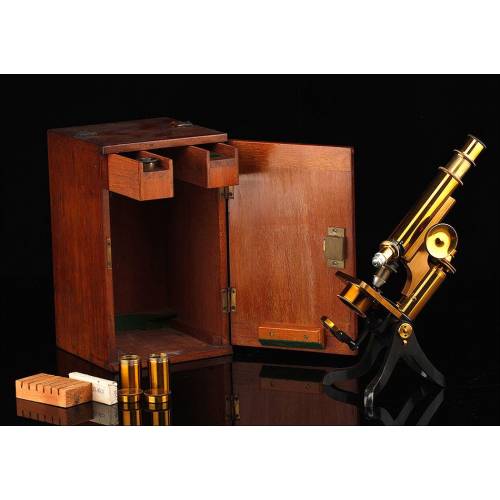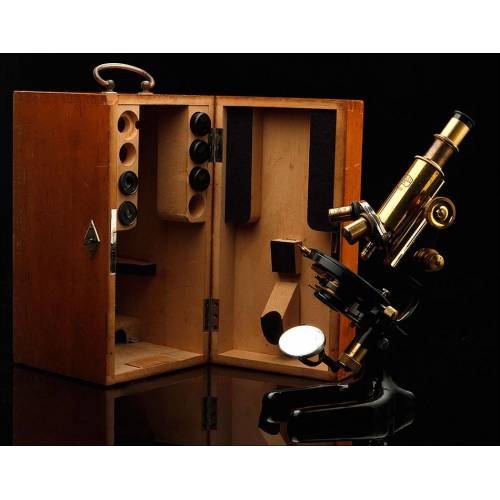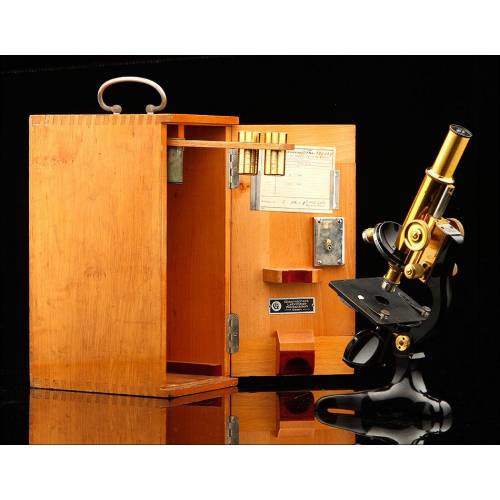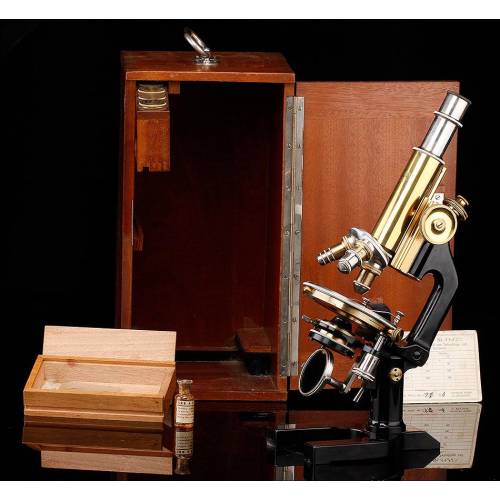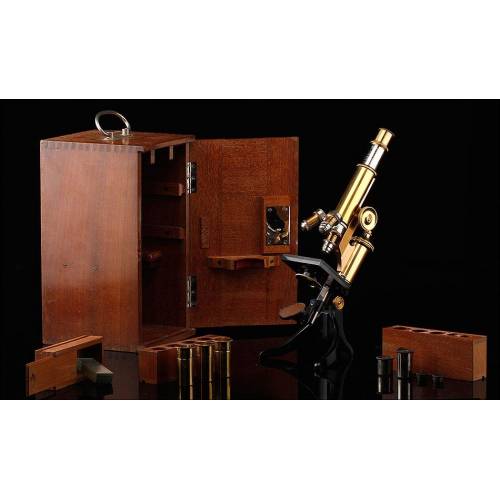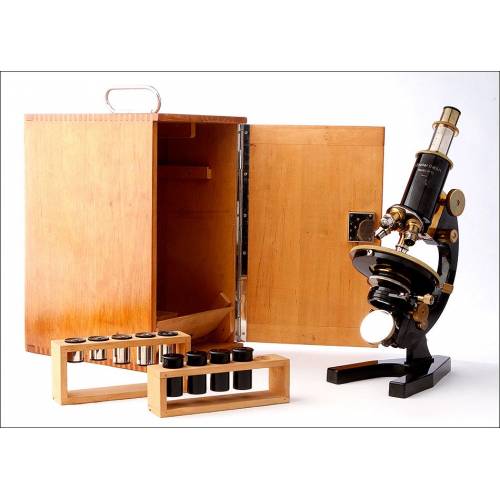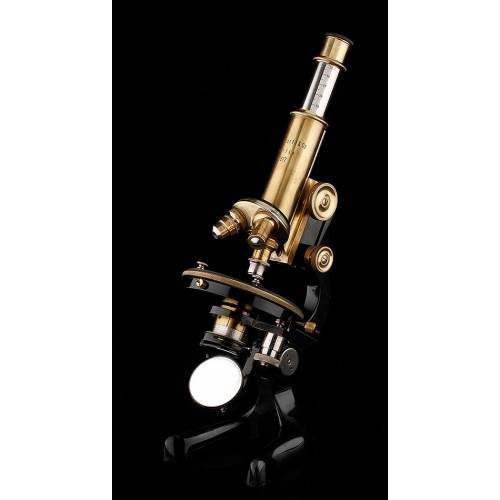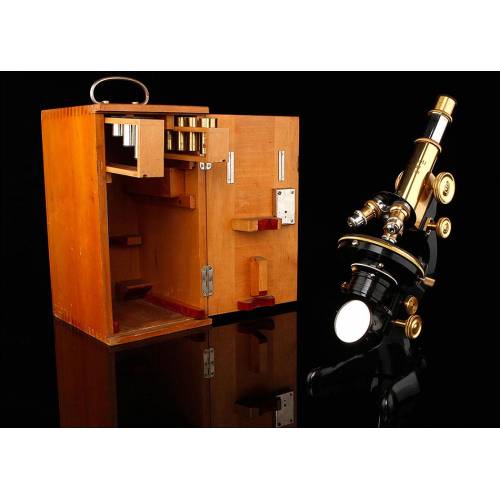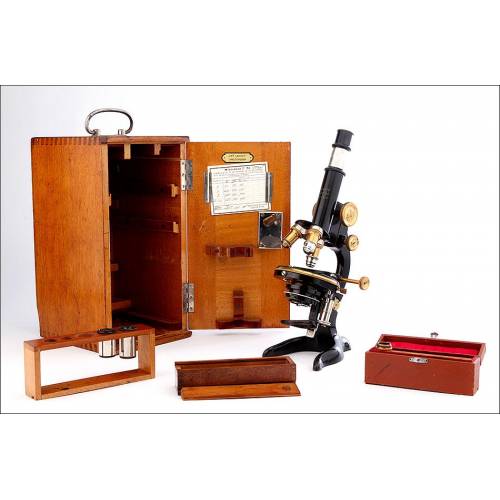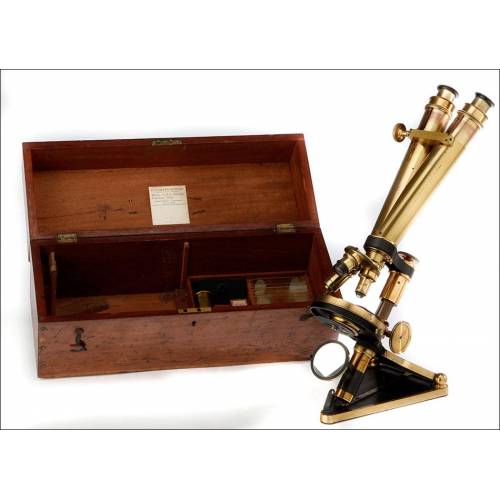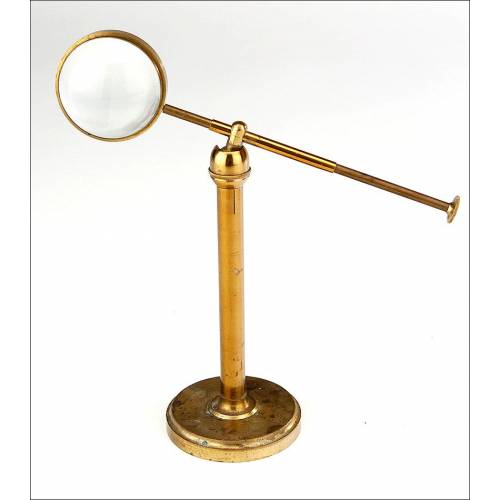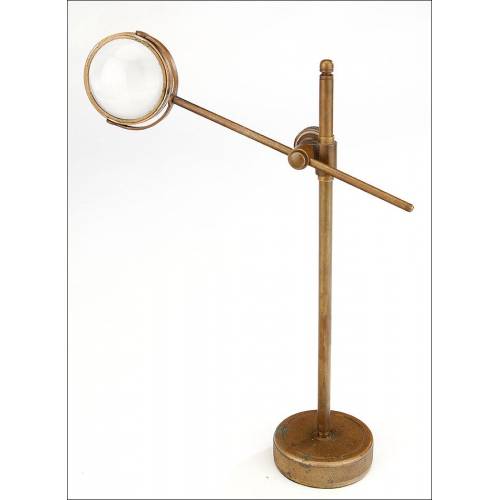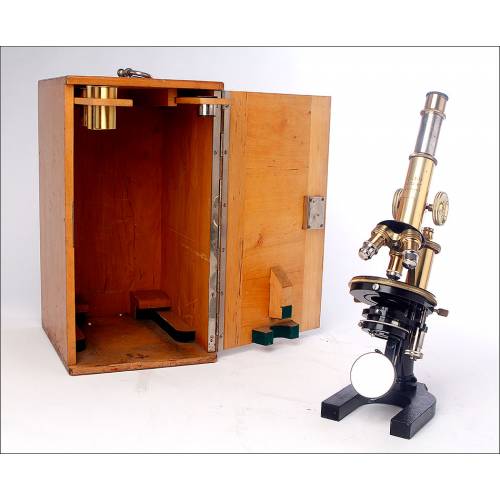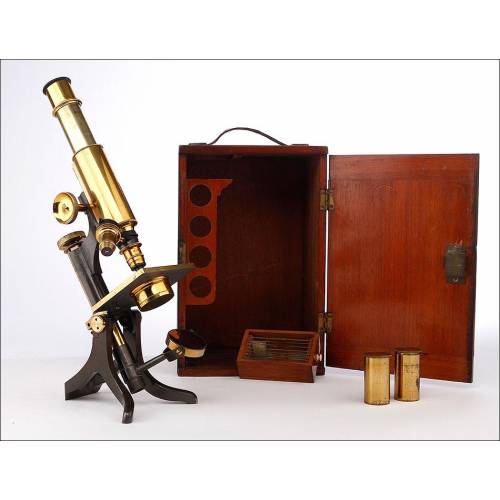C-856
Antique Reichert Microscope Mechanic Plate. Austria, Circa 1920
Magnificent mechanical microscope stage signed by C. Reichert. In excellent condition. Presented in its guard case.
Sold!
Amazing antique mechanical stage for Reichert microscope, made in Austria by the prestigious optic material manufacturer circa 1920. The stage stands out for its excellent condition. It is made of brass, iron and silvery metal (steel): the metal surface look even, shiny and polished, with no traces of rust or signs of wear. These devices are designed to be attached to the microscopes stage. The screws and scales included make it possible to move and manipulate samples without touching them, setting them to the millimeter (micrometrical adjustment). The stage that we can see in the images bears the manufacturers name, C. REICHERT, engraved in the metal. This name is accompanied by the serial number Nº 6834. Both inscriptions remain in amazing condition, perfectly legible. The storing case which contains the stage is the original one and is equally well preserved. Outside it is covered of red leather and bears the brand logo C. REICHERT AUSTRIA printed in golden lettering. Inside the case shows a gorgeous green velvet lining which has helped to preserve the stage in such good condition. This antique mechanical stage for Reichert microscope is the ideal accessory for such devices, being also a real collectors piece. History of Reichert The Reichert company was founded by Carl Reichert in 1876 in Vienna. Carl Reichert was a son in law of Ernst Leitz. He learned microscopy business from Leitz in Wetzlar (Germany) and then moved to Vienna to establish his own company. His company was successful and by 1930 the 100000th microscope was produced. However in 1962, the family Reichert sold the business to the company American Optical (AO). American Optical, in turn, was taken over in 1968 by the worldwide pharmaceutical company Warner Lambert. Later, within Warner Lambert, Reichert company was merged with Jung, another microscopy company established by Rudolf Jung in Heidelberg in 1872. In 1986 Warner Lambert sold all non-pharmaceutical companies to Cambridge Instruments (the optical company established in 1881 by the son of Charles Darwin, Horace). And finally, in 1990 Cambridge Instruments merged with the Wild Leitz to form Leica group. In 1999 Reichert stopped microscope production, concentrating to instruments for sample preparations for transmission electron microscopy. (Source: http://cellbiology.science.uu.nl/facilities/biology-imaging-center-bic/bic-museum-of-microscopy-overview/bic-museum-of-microscopy-reichert/).

